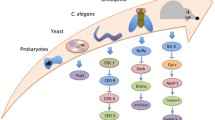Abstract.
Apaf1 has been described as the core of the apoptosome. Deficiency in murine Apaf1 leads to embryonic lethality with a phenotype affecting many aspects of developmental apoptosis. In the developing brain, Apaf1 is a death regulator of the neuronal founder cells. Combined intercrosses of mouse lines mutant for members of the mitochondrial death pathway are providing us with some clues about the relative regulation existing among neuronal cell populations. Apaf1-deficient embryos display an interesting phenotype in the inner ear and in limb development, which involves different caspase-dependent and -independent pathways. Moreover, APAF1 is mutated in human melanomas, and its depletion contributes to malignant transformation in a mouse model of cancer. This review has a double aim: the analysis of the alternatives taken by the embryo to bring into the suicidal program different cells at different stages, and the relevance of APAF1 in the onset and progression of cancer.
Similar content being viewed by others
Author information
Authors and Affiliations
Additional information
Received 5 March 2001; received after revision 19 April 2001; accepted 4 May 2001
Rights and permissions
About this article
Cite this article
Cecconi, F., Gruss, P. Human Genome and Diseases:¶Apaf1 in developmental apoptosis and cancer: how many ways to die?. CMLS, Cell. Mol. Life Sci. 58, 1688–1697 (2001). https://doi.org/10.1007/PL00000806
Issue Date:
DOI: https://doi.org/10.1007/PL00000806




